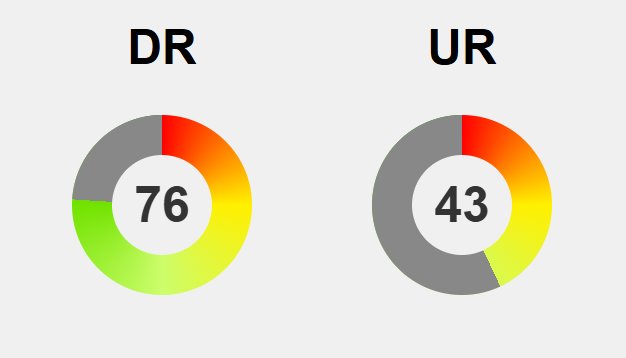Unlock the secrets to maximizing your summer tires’ lifespan while maintaining peak handling and control—because every mile should be smooth, safe, and cost-effective. But are you truly doing enough to care for your tires amidst rising temperatures and demanding road conditions? This guide explores the evolution of tire technology from humble beginnings to today’s smart sensors and eco-friendly compounds, emphasizing the importance of routine maintenance routines like pressure checks, rotations, and mindful driving habits. While many drivers rely on basic inspections, emerging tools and advanced systems are transforming tire care into proactive, real-time monitoring that prevents unexpected failures. Could small adjustments—like parking in shade or slowing on rough roads—significantly extend your tires’ life? As innovations continue to shape the future of automotive safety, understanding and embracing these techniques becomes vital for every driver seeking longer-lasting tires, better handling, and safer summer journeys.

Maximize Your Summer Tire Lifespan Without Sacrificing Handling
Summer tires play a vital role in ensuring your vehicle handles confidently during the warmer months. Designed specifically for hot, dry, and wet conditions, these tires provide better grip, stability, and control when pavement temperatures rise. But their true value isn’t just about performance; it’s also about making sure they last as long as possible. Maximizing their lifespan while maintaining optimal handling requires a blend of proper care and smart driving habits. When done right, this balance saves money, reduces inconvenience, and keeps your drives safer and smoother.
The evolution of summer tire care reflects over a century of innovation. Early models prioritized traction and braking in warm weather, using softer rubber compounds that offered excellent grip but wore out quickly. Over time, manufacturers refined tread designs and developed more durable rubber formulations, helping extend tire life without compromising performance. Today’s advancements include sensors embedded in tires that monitor pressure and tread wear in real time, making maintenance smarter and more proactive. Understanding these developments underscores why consistent care is essential for getting the most out of your tires.
Proper maintenance begins with simple routines—regularly checking tire pressure and inspecting tread depth. Hot weather causes air inside tires to expand, so frequent pressure checks, especially before long trips, help prevent uneven wear and safety issues. Maintaining the recommended PSI ensures your tires grip the road properly and resist blowouts. Visual inspections for cuts, embedded objects, or uneven tread help catch problems early. Coupled with routine rotations, these habits promote even wear, prolonging tire life and preserving handling performance.
Driving style also influences how quickly your tires wear out. Gentle acceleration, smooth braking, and careful cornering reduce stress on the rubber and limit heat buildup. These habits not only extend tire longevity but also sustain the precise handling summer tires are meant to deliver. Investing a little extra attention to your driving behavior can make a significant difference, helping you get the maximum miles and safety from each set of tires.
Staying proactive is key. Embracing new tools like digital pressure gauges and tire sensors simplifies maintenance routines and provides peace of mind. Shaded parking, avoiding potholes, and slowing down on rough roads further protect your tires from unnecessary damage. When maintenance becomes part of your regular driving routine, you ensure your tires remain in top shape, delivering the control and safety you rely on every summer. Proper care today keeps your drives smooth, safe, and cost-effective for miles to come.
The Rich History and Basic Principles Behind Summer Tire Care
The way we care for summer tires today has roots stretching back over a century, evolving alongside advances in automotive technology and shifting driving needs. Initially, summer tires were designed specifically to handle warm weather, focusing on delivering better grip, handling, and braking on hot, dry roads. Early versions used softer rubber compounds that offered excellent traction but wore out quickly, prompting manufacturers to find a balance between performance and durability. Over time, innovations such as specialized tread patterns and improved rubber formulas helped extend tire life without sacrificing their summer-specific advantages.
This ongoing development reflects a continuous effort to meet drivers’ demands for safety, efficiency, and comfort. As vehicles grew faster and roads more demanding, tire makers responded by refining materials and design features. Summer tires today feature softer rubber to maximize contact with hot pavement, which enhances grip but also increases wear. Maintaining their performance requires diligent care—regularly checking tire pressure, inspecting tread, and rotating tires to promote even wear. These foundational practices have been essential for ensuring that summer tires deliver the handling and safety they’re built for over the long haul.
Understanding the history behind summer tire care highlights why routine maintenance remains critical. Their softer rubber compounds and streamlined treads are engineered for maximum performance in warm conditions, but they demand consistent attention. Underinflated tires wear unevenly and lose grip, risking safety and reducing lifespan. Conversely, overinflation can cause a harsher ride and uneven wear. Regular inspections for cuts, embedded debris, or uneven tread wear help catch early signs of damage or misalignment, preventing small issues from escalating into costly repairs or safety hazards.
Tire rotations, typically recommended every 5,000 to 8,000 miles, are another key element rooted in this history. They ensure even tread wear, extend tire longevity, and help maintain responsive handling. In addition, the adoption of tire pressure monitoring systems (TPMS) and portable sensors has modernized maintenance routines, offering real-time insights and reducing guesswork. These technological tools build on the fundamental principles of tire care, making it easier for drivers to stay proactive, rather than reactive, when it comes to maintaining their summer tires.
Ultimately, the foundation of summer tire care is built on simple but consistent habits—checking pressure, inspecting tread, and rotating tires. These basics form the backbone of maintaining grip, safety, and longevity, regardless of technological advancements. Recognizing their importance helps drivers protect their investment and ensure their vehicle handles confidently in warm weather. By understanding the history and principles behind tire maintenance, you can develop habits that keep your tires performing at their best, mile after mile.

Current Practices in Summer Tire Maintenance and Their Limitations
Today, most drivers tend to stick to basic routines when it comes to caring for their summer tires. They often rely on quick checks of tire pressure and a visual inspection for obvious damage like cuts, punctures, or embedded debris. These simple steps are viewed as enough to keep tires functioning, but they can easily miss subtle issues that develop over time. Small internal damages or uneven tread wear often go unnoticed until they cause safety concerns or lead to costly repairs.
Checking tire pressure remains the most common maintenance habit. Many drivers use portable gauges or rely on built-in monitoring systems to ensure their tires stay within the recommended PSI. This is critical because both under- and over-inflation can cause uneven wear, reduce grip, and increase the risk of blowouts—especially in hot weather when air expands inside the tires. Despite its importance, many neglect to check pressure frequently enough during summer, missing fluctuations caused by temperature changes.
Visual inspections are another routine, but often superficial, practice. Drivers look for visible damage like cuts, embedded objects, or uneven tread patterns. While these can catch obvious issues, they rarely reveal internal problems or early signs of uneven wear that could indicate alignment or suspension problems. Tire rotations, recommended every 5,000 to 8,000 miles, are often skipped due to forgetfulness, time constraints, or lack of awareness about their significance. Skipping this step accelerates uneven tread wear and shortens tire lifespan, impacting handling and safety.
Technological advances have introduced tools that simplify tire maintenance. Many modern vehicles feature tire pressure monitoring systems (TPMS), which alert drivers to pressure drops. Portable digital gauges and smart sensors offer quick, accurate assessments of tread depth and internal pressure. However, these devices aren’t yet universal, and many drivers still rely on manual checks or neglect regular maintenance altogether. This leaves their tires more vulnerable to damage and quicker deterioration.
Environmental factors and driving habits greatly influence tire wear during summer. Exposure to UV rays and high temperatures can cause rubber cracks and degradation. Potholes, debris, and rough roads increase the risk of cuts and punctures. Aggressive driving—sharp turns, sudden braking, rapid acceleration—generates heat and stress that speed up tire wear. Despite knowing these risks, many drivers fail to take preventive measures such as parking in shaded areas or slowing down on rough surfaces, which could significantly extend tire life.
While routine checks are common, there’s clear room for improvement. Developing a habit of proactive tire care—regular pressure checks, inspections, and timely rotations—can make a noticeable difference in longevity and safety. Investing in better tools like tire sensors or portable inflators simplifies this process, making it easier to stay on top of tire health. Recognizing that tire maintenance isn’t just a chore but a crucial part of safe driving encourages more consistent care, especially during the demanding summer months.
To further enhance your tire maintenance routine, consider exploring innovative solutions that provide real-time insights into tire condition. Using advanced tools can help prevent unexpected issues and extend tire life. For more comprehensive guidance, you might find this article on tire maintenance tips particularly helpful in ensuring your tires remain in top shape throughout the summer.
Proven Strategies to Enhance Your Summer Tire Care Routine
To get the most out of your summer tires, establishing a straightforward yet disciplined maintenance routine is key. Start by checking your tire pressure at least once a month, and more frequently during hot weather. Since heat causes air inside the tires to expand, pressures can drift outside safe limits quickly. Using a reliable gauge and adhering to the manufacturer’s recommended PSI ensures your tires maintain optimal contact with the road, supporting both safety and handling. Don’t forget to adjust pressure before long trips or after significant temperature swings—they’re small steps that make a big difference.
Tire rotations are equally important. Aim to rotate your tires every 5,000 to 8,000 miles, depending on your vehicle’s guidelines. Consistent rotations promote even tread wear, which preserves handling precision and extends tire lifespan. Keep an eye on the tread pattern; uneven wear often signals alignment or suspension issues that need addressing. Catching these early prevents more costly repairs and keeps your vehicle responsive, especially in demanding summer conditions.
Adopting mindful driving habits can also significantly extend your tires’ life. Gentle acceleration, smooth braking, and careful cornering reduce stress and heat buildup in the rubber. These habits not only slow down tire wear but also help maintain the grip and handling summer tires are designed for. When you drive more smoothly, you’re protecting your investment and ensuring your vehicle remains confident on every curve and straightaway.
Modern technology offers tools that make tire maintenance easier and more accurate. Many vehicles now come equipped with tire pressure monitoring systems (TPMS), which alert you when pressure drops below safe levels. Portable digital gauges and smart sensors can provide real-time insights into tread depth and internal pressure, turning guesswork into certainty. Incorporating these devices into your routine keeps your tires healthy without added hassle and helps you spot issues before they impact safety.
Protecting your tires from environmental damage is equally crucial. Parking in shaded areas, avoiding potholes, and slowing down on rough roads all help prevent cuts, cracks, and embedded debris. Small precautions like these can significantly prolong tire life. Developing an attentive mindset—regularly inspecting your tires, staying aware of road conditions, and adjusting your driving accordingly—ensures your tires perform reliably and safely throughout summer.
Finally, view tire maintenance as an ongoing conversation rather than a one-time task. Making it part of your regular driving routine transforms it into a habit that pays off in safety, control, and cost savings. The combination of consistent checks, mindful driving, and embracing new tools ensures your tires remain in top shape. This approach not only maximizes their lifespan but also guarantees that every mile stays smooth, safe, and cost-effective.

Innovations on the Horizon: The Future of Summer Tire Maintenance
As summer tire care continues to evolve, staying informed about new innovations can significantly enhance how long your tires last and how well they perform. Advances in materials, such as eco-friendly rubber compounds, promise longer-lasting tires that don’t sacrifice grip or safety. These improvements help extend tire life while also reducing environmental impact, benefiting both your wallet and the planet. Additionally, smart monitoring systems are making it easier to track tire health in real time, giving you the opportunity to address issues before they become safety hazards.
Looking ahead, we can expect even more sophisticated technology to shape summer tire maintenance. Embedded sensors and connected systems will provide detailed insights into tread wear, pressure, and temperature—accessible through your smartphone. This shift toward proactive maintenance means fewer breakdowns and safer drives, as you’ll be alerted to problems early on. Some manufacturers are experimenting with self-healing rubber that can repair minor cuts and cracks automatically, further boosting tire longevity and ensuring consistent handling.
The push toward sustainability will also influence tire development. New rubber formulations that are both durable and environmentally friendly are gaining traction. As these materials become mainstream, drivers will benefit from tires that last longer and degrade more slowly, reducing waste and resource consumption. This move toward greener options aligns with broader societal goals and will likely lead to more affordable, high-performance tires that require less frequent replacement—cutting costs and environmental impact in one stroke.
Digital technology is transforming how we approach tire care. Real-time monitoring, predictive analytics, and automated inflation systems will make maintenance more convenient and less time-consuming. Imagine your vehicle alerting you to low pressure or uneven wear days before it affects safety. These tools will empower drivers to stay ahead of tire issues, maintaining optimal handling and safety across all summer drives. Embracing these innovations turns routine maintenance into a simple, stress-free part of your regular driving habits.
While these technological advancements promise a brighter future, the importance of fundamental tire care remains unchanged. Regularly checking pressure, inspecting tread, and rotating tires according to manufacturer guidelines are still the best ways to protect your investment. No matter how advanced the tools become, consistent habits and attentiveness are key to maximizing tire lifespan and safety.
In the end, ongoing innovations aim to make driving safer, more efficient, and environmentally friendly. As these technologies become more accessible, they will help you extend your tires’ life while maintaining peak handling and safety. Combining traditional care routines with modern solutions ensures your tires stay in top shape, delivering smooth, safe, and cost-effective performance mile after mile. Staying proactive and open to new developments will keep your summer drives not only enjoyable but also smarter and more sustainable.






